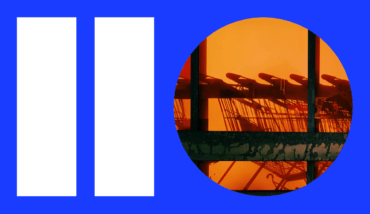In recent weeks we have spoken about the growth of native advertising and what it means for brands. It also seems that the platforms that host and distribute content are also looking to generate more revenue from native advertising – YouTube, Pinterest, Twitter, Tumblr and Snapchat have all made moves towards creating and hosting more content of their own in conjunction with brands.
YouTube has amended its policies so that creators can no longer host banner ads over their videos unless the ads are sanctioned through Google’s sales team. According to a revised FAQ document in YouTube’s help and support section, video overlays of sponsor logos and product branding are no longer allowed — unless the sponsor pays Google to advertise on that channel.
Pinterest is also clamping down on “free” advertising, imposing a ban on affiliate links last week, a technology that allowed Pinterest’s most powerful users to prove they were sending traffic to brands’ websites and, in turn, make money. The decision came amid reports Pinterest was working on adding a “buy” button to posts, thus turning it into an e-commerce platform. It has been speculated the crackdown was to prevent affiliate marketers from interfering with Pinterest’s e-commerce plans – which would make sense, given the role Pinterest has in driving e-commerce. According to statistics from Gigya, for general social sharing of all types, Facebook leads the way with a 41% share, followed by Twitter at 30%, and Pinterest at 20%; LinkedIn and Google+ lagged behind with 4% and 3% of all sharing activity, respectively. But a rather different picture emerged for sharing related to e-commerce, where Pinterest led the way with 44% of all e-commerce-based shares, followed by Facebook with 37% and Twitter at just 12%.
As always, Twitter is continuing to develop its own platform. Two weeks ago, Twitter acquired Niche, a startup that brokers sponsored-content deals between Internet celebrities with brands for advertising opportunities. While Niche’s network encompasses many platforms, its specialty is video sharing app Vine. In acquiring Niche, Twitter can now earn revenue from these deals (it wasn’t earning a dime from them before). This acquisition plays more to Twitter’s strengths as more of an open platform than Facebook, and gives an outlet for producing native advertising suited to the platform. Not to be left out in the cold, Tumblr launched Creatrs Network in January, an in-house agency designed solely to broker sponsored-content deals between brands and Tumblr’s most popular account holders.
And as we have spoken about before, Snapchat is attempting to transform itself into a publishing platform, garnering a speculated $19 billion valuation in a new funding round last week. Snapchat is getting its own superhero series, where stars from YouTube and Vine are featured in short clips. Vice Media Inc. first released a report that it filmed inside a Chinese bitcoin mine on Snapchat, where it was viewable for 24 hours before disappearing and moving to other platforms. Snapchat also has ambitions in the music industry: Warner Music Group was one of the launch partners for its Discover section, while Madonna recently debuted her new music video within the app. Snapchat has also promoted new artists like Goldroom, Guards and Smallpools when launching new features, experimenting with a “tap to buy” feature for the latter to send fans to their iTunes page.
It would seem a great deal of the activity from social networks is driven by the increasing usage of mobile as a video consumption channel. The actions from the platforms indicate that native is only set to continue to grow, and the audience is on mobile.
Written by James Ellis, Mobile Strategist at M+C Saatchi Performance. M+C Saatchi Performance is an award-winning performance marketing agency focused on driving measurable results for organisations in all industries. Feel free to get in touch with us about your new project.

